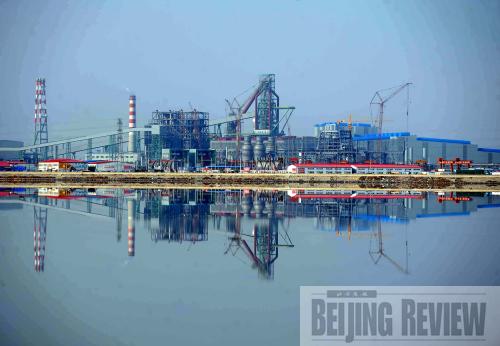|
 |
|
MORE STEEL: A new factory of the Shougang Group in Caofeidian, Hebei Province, boasts a steel production capacity of 4.85 million tons. Merrill Lynch predicted that 2009-11 will be a period of recovery for China's iron and steel industry (LUO XIAOGUANG) |
Recently, a trade row between the European Union (EU) and China—the world's first and third biggest economies, respectively—has caused concerns. On July 27, the EU imposed anti-dumping duties of 24.2 percent on Chinese steel wire rods. This was the first time for the EU to adopt anti-dumping measures using the excuse of "threats of material injury."
Four days later, Beijing followed suit by filing a complaint with the World Trade Organization (WTO) over the EU's anti-dumping duties imposed on Chinese iron and steel fasteners in January, the first time China has made such a petition to the WTO since it entered the organization eight years ago.
Does the EU's imposition of anti-dumping taxes herald a symbolic comeback for international protectionism? How will China respond?
Abused measures
Disagreements over anti-dumping friction are by no means a new phenomenon when it comes to Sino-EU trade. Indeed, in recent years, due to the mushrooming trade volume and continuously widening trade gap with China, the EU has repeatedly imposed anti-dumping duties on Chinese products—causing tensions between both sides and posing barriers to bilateral trade.
The EU carried out two anti-dumping investigations and three anti-dumping measures in the first half of this year, all of which targeted Chinese exports.
| 